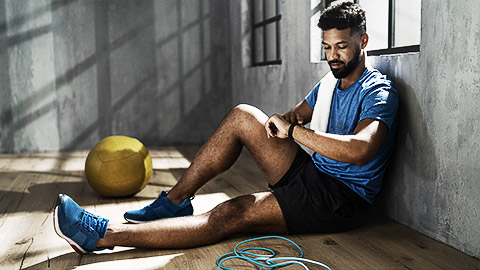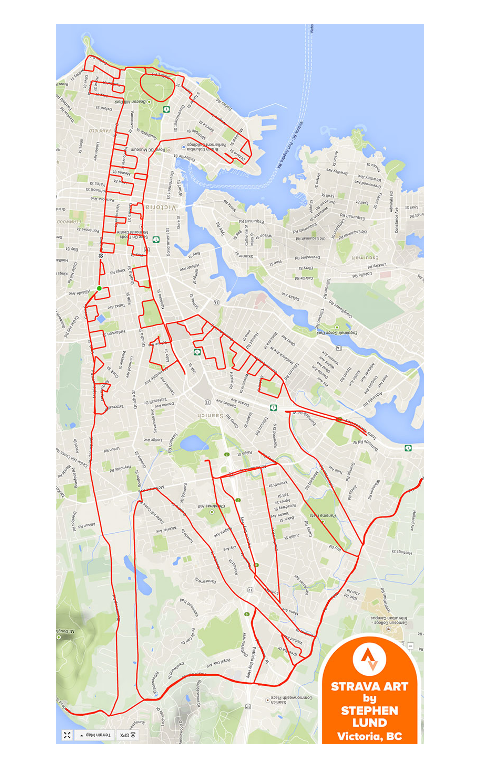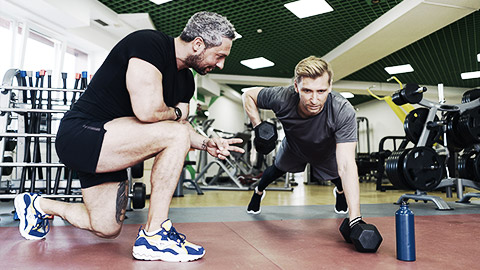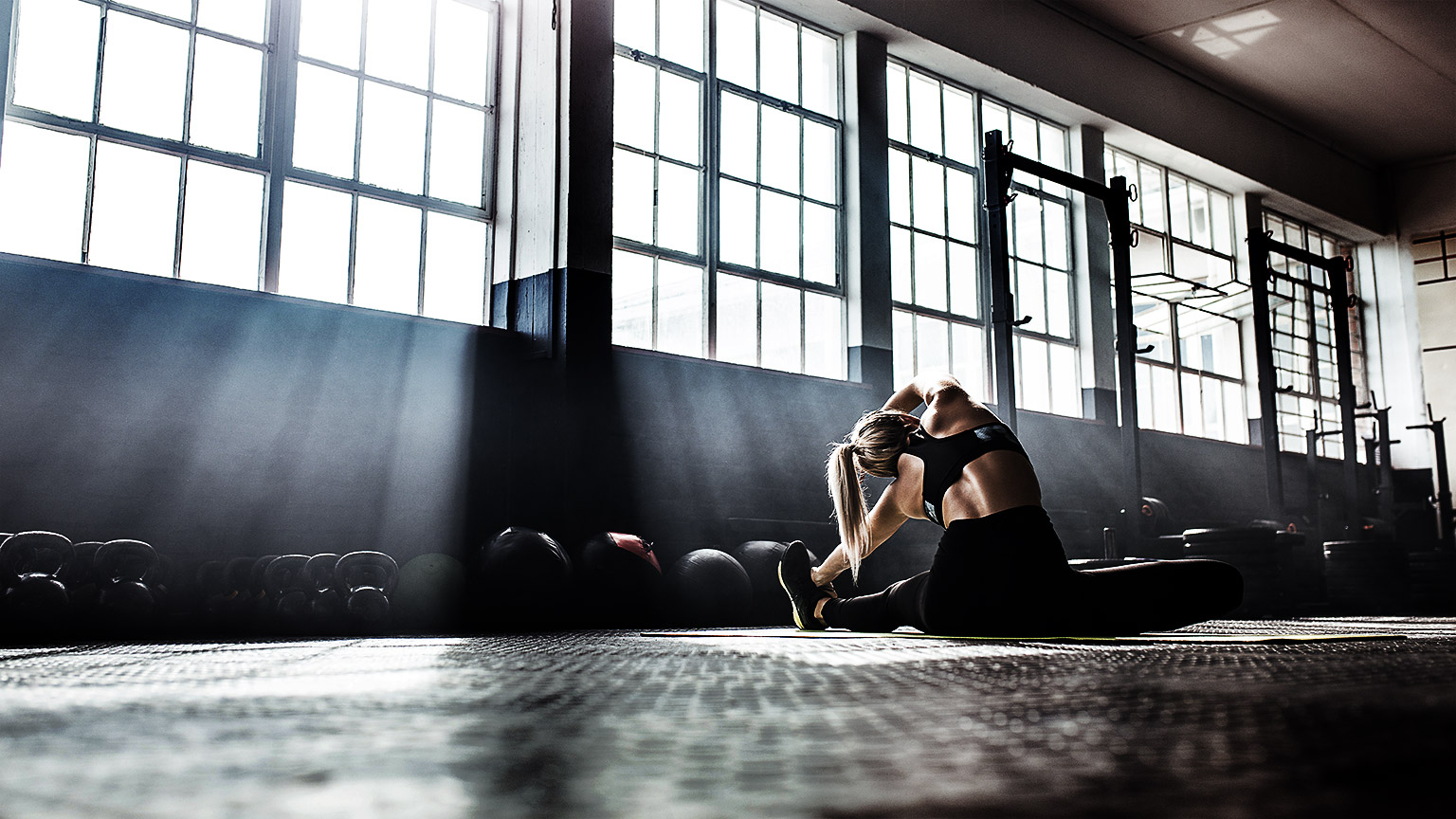The Exercise Association of New Zealand (ExerciseNZ) and the World Health Organisation (WHO) have identified that physical inactivity is one of the major precursors to many non-communicable diseases (NCDs).
A lack of exercise increases the risk of NCDs by 20-30% and every year, 830,000 deaths can be attributed to insufficient physical activity globally (World Health Organization, 2022).
Examples of NCDs include cardiovascular disease, cancer, chronic respiratory disease, and diabetes.
Cardiovascular disease
Cancers
Chronic
respiratory disease
Diabetes
An NCD is not infectious. You don’t catch cancer like you would the flu. You cannot spread a heart attack or diabetes. Genetic, physiological, environmental, and behavioural factors all influence the likelihood of developing an NCD. And while we cannot change genetics, we can modify behavioural risk (World Health Organization, 2022a).
Lifestyle has a significant impact on the rates of these diseases.
4 risk factors cause 4 diseases that cause 90% of premature deaths.AIA New Zealand, 2019
These 4 risk factors are:
- Unhealthy diet
- Tobacco use
- Harmful use of alcohol
- Insufficient physical activity (AIA New Zealand, 2019)
What do the stats tell us?
Globally, one in four adults do not do enough physical activity. Of adolescents – 81% do not move their bodies enough (World Health Organization, 2022).
The Physical Activity Profile 2022 by WHO provides specifics for New Zealand.
How do you get people moving?
Watch the 1News interview with Richard Beddie and Hadleigh Pouesi, where they discuss how New Zealanders compare and how to improve our nation’s engagement with physical activity.
A key takeaway from the interview is that elite (or competitive) sport and participation in physical activity are not implicitly linked. Sport is generally competitive and while competition can be motivating for some, it is demotivating for others.
Beddie and Pouesi emphasize that we need to help people, especially young people, discover the fun that can be had in physical activity. It’s about (re)finding the thing that gives you joy and engaging in unstructured play. To improve participation in physical activity, we need to make it relevant and enjoyable.
Global status report
Beddie and Pouesi are responding to the global status report. This is a report on how we are tracking against the policy areas and recommendations set by WHO in the Global Action Plan on Physical Activity (GAPPA) 2018-2030. The GAPPA sets out four policy areas for countries to adapt to improve physical activity.
| Active Societies |
Inform, motivate, and engage the population through sustained, community-wide communication campaigns. |
|---|---|
| Active Environments |
Promote safe, well-maintained infrastructure, facilities, and public open spaces that provide equitable access to places for walking, cycling and other physical activity. |
| Active People |
Ensure access to opportunities, programmes, and services across multiple settings to engage people of all ages and abilities in regular physical activity |
| Active Systems |
Strengthen leadership, governance, multi-sectoral partnerships, research, advocacy, and information systems to support effective coordinated policy implementation. |
Read the Executive Summary (pages vii to xiii) of the global status report and answer the questions that follow.
Now let’s look at New Zealand specifically. Read the New Zealand profile and answer the following:
Take a moment to consider these open questions.
- If you were responsible for increasing physical activity in New Zealand, what would you invest in? What programmes or policies would you create?
- How does creating a safe environment for pedestrians and cyclists increase physical activity?
- What campaigns are you aware of to increase physical activity?
- Do you participate in community fitness programmes? If so, what do you enjoy about them?
This is a great opportunity to share your reflections with your peers. Post a response to these questions in the forum. Read responses from your peers and respond to at least one other person’s post.
If you were around in the late 1990s you might remember a hugely successful campaign to get New Zealanders active. It was called Push Play and the message was to push play for 30 minutes a day. Sport New Zealand | Ihi Aotearoa has launched a new campaign to push play – again. But this time, the coaches are a little younger. Check it out.
The benefits of being physically active
Encouraging people to be physically active has significant health benefits. Regular physical activity improves:
- Muscular and cardiorespiratory fitness
- Bone and functional health
- Mental wellbeing
- Cognitive outcomes (thinking, learning, and judgement skills)
- Sleep
It reduces the risk of:
- Hypertension
- Coronary heart disease
- Stroke
- Diabetes
- Some types of cancer, including breast and colon cancers
- Depression
- Falls, hip and vertebral fractures (World Health Organization, 2022)
Good for your metabolism
Good for your
muscles, joints, and bones
good for your
overall quality of life
Good for your brain
Good for your heart
(AIA New Zealand, 2019)
How does your typical week compare to the guidelines on physical activity and sedentary behaviour? Use the following definitions to answer the questions that follow.
| Aerobic physical activity | ‘Activity in which the body’s large muscles move in a rhythmic manner for a sustained period of time. Aerobic activity – also called endurance activity – improves cardiorespiratory fitness. Examples include walking, running, swimming, and bicycling.’ |
| Muscle-strengthening activity | ‘Physical activity and exercise that increase skeletal muscle strength, power, endurance, and mass (e.g. strength training, resistance training, or muscular strength and endurance exercises).’ |
| Sedentary behaviour | ‘Any waking behaviour characterized by an energy expenditure of 1.5 METS or lower while sitting, reclining, or lying. Most desk-based office work, driving a car, and watching television are examples of sedentary behaviours; these can also apply to those unable to stand, such as wheelchair users.’ |
(World Health Organization, 2020)
So, how’s the fitness industry doing? IBISWorld released a market research report on gyms and fitness centres in New Zealand in April 2022.
Gyms and fitness centres have a national market size of $416 million. There are approximately 987 gyms and fitness centres in New Zealand with 4,488 employees. It’s important to note that a high percentage of trainers are self-employed and/or contractors.
Current state
The industry had challenges throughout the COVID-19 pandemic due to restrictions and lockdowns with many operators needing to suspend membership fees. However, on balance the trends over the period 2017 – 2022 were still positive. During this time, there has been an increase in health consciousness.
24-hour budget and functional training gyms increased in popularity – These businesses offer alternatives to full-service gyms.
Industry revenue is forecast to have increased by 1.0% annually through until the end of the 2022 financial year.
Industry outlook 2022 – 2028
Looking ahead, trading conditions are expected to improve. Easing pandemic restrictions, the continued growth of health consciousness, and household discretionary income are expected to result in increased industry demand. A slight market saturation is anticipated, and we can expect industry competitiveness to intensify, reducing profit margins (IBISWorld, 2022).
The fitness industry is set for significant growth post-pandemic with a trend away from gyms and towards outdoor, home fitness, and digital options. The industry is expected to grow from USD 160 billion in 2021, to USD 434.74 billion by 2028 (Rizzo, 2021).
- Online/digital fitness is projected to have the highest growth rate of 33.10% per year
- The gym industry has the lowest compound annual growth rate of 7.21% per year
It’s a great time to expand into online and digital fitness, which has the added benefit of opening your market up to the world. In a future module – Personal Training as a Business – you'll get to research and put together a business plan, so you can have a thriving career despite any future market challenges.
Fitness trends

Every year since 2006, the American College of Sports Medicine (ACSM) has released a list of fitness trends based on a worldwide survey by health professionals.
The top spot in 2022 was wearable technology.
If you need evidence that you’ve made the right decision to study personal training, you should know that personal training has consistently ranked in the top 10 trends. It includes fitness testing, goal setting, and working one-on-one with a client.
Here’s the top 10 trends. How many of them have you tried? Is there anything on the list that surprises you?
- Wearable technology
- Home exercise gyms
- Outdoor activities
- Strength training with free weights
- Exercise for weight loss
- Personal training
- High intensity interval training (HIIT)
- Body weight training
- Online live and on-demand exercise classes
- Health/wellness coaching
Let’s take a closer look at a few of these trends.
Wearable tech includes smart watches, fitness trackers, heart rate monitors, and GPS tracking devices. And some people get pretty creative with their exercise routes. It took Strava user Stephen Lund 3 h 30 min to draw this giraffe with over 95 km of cycling.

Strava Art Giraffe by Stephen Lund, © Stephen Lund
It’s estimated that wearable technology is a $100 billion industry with new innovations constantly being rolled out to market. Latest technology includes blood pressure, oxygen saturation, and electrocardiogram.
Trends such as home exercise gyms, outdoor activities, and online live and on-demand exercise classes have soared as a result of the COVID-19 pandemic. In fact, 2022 was the first time since the annual survey began that home exercise gyms appeared in the list. Which one of these trends do you think will stick around to be a long-term fitness trend?
Research one of the top 10 trends and tell your peers about it in the forum. Are you excited or cynical about the trend? Where do you think the fitness industry is heading?
Employment opportunities
Personal trainers can be:
- Contractors
- Independent contractors
- Employees
- A combination of the above
Watch the video for an overview of the different employment opportunities for trainers. Which type appeals to you?
If you cannot see the video below, click the box that says "Click to sign in and play video". This will automatically log you into our video-sharing app so you can view the video in NZIS online. If you are experiencing issues, make sure pop-ups are always allowed from https://uponline.education. This can be amended in your taskbar or browser settings.
Small group trainers provide personal training services in a group format. They fall into one of the three personal trainer categories.
Industry leaders tell us employers are looking for personal trainers with:
- Exceptional customer service skills
- High levels of drive and self-motivation
- The ability to control their own finance
- Excellent knowledge of human body anatomy and systems
- Excellent knowledge of programming principles
- Nutritional awareness
- An energetic and hands-on approach to training

Knowledge of health risks is, by itself, not enough to change people’s behaviour.
You can have a positive impact
If you think back to the WHO report, maybe it stirred strong feelings.
Perhaps you felt sad, mad, frustrated, surprised (or not surprised). It can be a bit of a downer being confronted with those stats and seeing how unhealthy we are as a nation. But that’s why we need amazing personal trainers. You have the potential to have a hugely positive impact on people’s wellbeing, including the wellbeing of your future clients, your community, or people you interact with daily like friends and family. Hey, maybe you are on your own journey to improved health and fitness.
If you want people to live healthier lifestyles you need to reward them for making healthier choices every day, as opposed to only rewarding them for achieving an ultimate big-picture goal.Dan Ariely – Professor of Psychology and Behavioural Economics, Duke University (AIA New Zealand, 2019)
Behaviour isn't easy to change. Have you ever tried to make one of the following changes?
- Going to bed or waking up earlier
- Being more assertive at work
- Meal planning
- Reducing alcohol intake
- Quit smoking
Was it easy or challenging? Did you have support from anyone to reach your goals?
Often making sustained behavioural change is difficult. But just because it’s challenging, doesn’t mean it’s not worth doing. Small wins and partial success can still be hugely beneficial for your client’s health and fitness.
There are many reasons why people choose to embark on a journey to become a personal trainer. Some people find satisfaction in knowing that the work they do is making a difference in someone’s life. Others simply have a passion for exercise and are motivated to share and build relationships with others to achieve their goals.
As a personal trainer, you’ll have many roles to play when supporting your clients. You’ll be a motivator, an instructor, an educator, and at times a friend. You’ll help clients feel and look great by incorporating a design programme that focuses on their specific goals. You may also guide clients through recovery from injuries, or perhaps even enthuse them to embark on their own fitness careers.
Questions to ask yourself to help you understand your “why”:
- Why do you want to be a personal trainer?
- Are you seeking independent work?
- Do you wish to have flexible working hours?
- Do you wish to be in control of your own future?
- Do you want to be your own manager?
- Do you want to share your passion for helping others?
- Do you wish to supplement your current income?
- Are you looking for a career change?
It is important to take time to think about why you want to be a personal trainer and be clear on it before you embark on your journey. Keep it in mind throughout your study to motivate both you and your clients. Your “why” reflects you, let it shine!
Next, we are going to get you to answer some of the questions that personal trainers and coaches ask new clients. This can be confronting for a lot of people. Talking about one's own health and decisions around health can stir up feelings of anxiety, shame, and confusion.
But it is also an opportunity to connect with a client, reassure them and have them know someone is there to help and change the narrative. How coaches approach these conversations is key. “It’s not what you say it’s how you say it” – but we will touch on that a bit later in the exercise prescription modules. For now, have a look at the questions and have a go at answering them yourself.
In this video, you'll hear from Justin, Riaan, and Davy, 3 of our Sports Tutors.
If you cannot see the video below, click the box that says "Click to sign in and play video". This will automatically log you into our video-sharing app so you can view the video in NZIS online. If you are experiencing issues, make sure pop-ups are always allowed from https://uponline.education. This can be amended in your taskbar or browser settings.
Share
You’ve heard from some of the NZIS team how they found their passion for health and fitness. Now it’s time to share yours. If you feel comfortable, record an introduction and upload it to the forum. Alternatively, write an introduction and share some images.
Not sure where to start? You might want to mention:
- Your name (you should definitely mention your name)
- Where are you located? (Maybe there are others studying nearby!)
- Why did you choose to study personal training?
- What does health and fitness mean to you?
- What are you most looking forward to about study and working as a PT?
Check out your peers’ introductions. Do you have anything in common? Let them know!
Being a personal trainer is all about connecting with your clients. You’re supporting them through tough times and celebrating wins.

Dealing with the tough times
When you study to be a personal trainer, you too will go through tough times and wins. It’s a field dedicated to growth and part of that is giving and receiving feedback. Feedback can be confronting. Putting yourself out there to receive feedback can make you feel vulnerable. These are very valid feelings.
It’s important to create a safe space where you encourage and support your peers. It can also be helpful to build resilience. This allows you to respond in a positive way to feedback, recognising that it is crucial for a growth mindset. Build a community of continuous improvement – ask for and welcome feedback.
Building resilience will be helpful when it comes time to seek employment or grow your own personal training business. You’ll need to take risks to grow your business and build your client database. Hopefully, these risks will be met with great rewards, but it is also possible that there will be hurdles along the way.
Resilience is the capacity to recover from adversity
Adversity is a hardship – a state of serious or continued difficulty. How we approach these hardships determines if we become stronger, more resilient, and thrive when obstacles come up.
Those with resilience often have an easier time facing challenges simply because they will persevere.
Seeing setbacks as opportunities for growth makes you more prepared to deal with them. You’ll be encouraged to seek out challenges because you know they will move you forwards.
The good news is that resilience isn’t a fixed personality trait; we’re not born with a set amount of it.Sandberg, 2017
Building resilience takes time. All our experiences can either help develop our resilience, or knock it back. Either way our capacity to face adversity is continually changing.
Dr Lucy Hone is a director of the New Zealand Institute of Wellbeing & Resilience. Watch the video to hear how she coped with loss and her three key strategies for building resilience. Content warning: The following video contains sensitive content about the loss of a child. You do not have to watch.
Dr Hone’s key strategies for building resilience:
- Understand the suffering is part of life
- Tune into the good
- Ask yourself, ‘Is this helping or harming me?’ (Hone, 2020)
Take a moment to reflect on your own resilience and adversity that you have faced. What is one thing you can do to grow your resilience?
